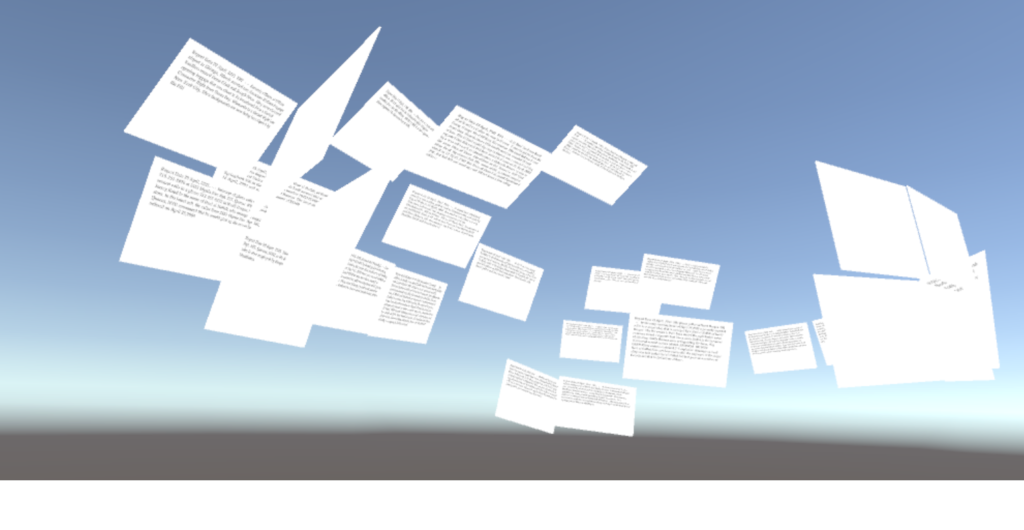
Complex data-sets are often hard for users to parse and extract meaning from the various data artifacts presented to them. The field of data analytics has chipped away at this difficulty in order for users to make better arguments and create better storylines about the data they have available. Immersive analytics, in turn, is a blend of data analytics with virtual environments. This has enabled users to blend the capabilities of computer analysis with human analysis, thereby making the data easier to understand and search.
The Immersive Space to Think (IST) is a continuation of the work Dr. North started in visual analytics and sensemaking. Using a virtual space, IST allows users to see content in a 3-dimensional space and manipulate the data in ways to more easily share the information presented in them. For example, a text-based document can be highlighted in order for the key passages to be more easily seen. Users can then create structures of meaning with these documents in order to showcase similarities in groups of data. In our early work, we are observing how users create, organize, and notate these structures of meaning in order to better understand their needs as data analysts.
Conferences
Sensemaking Strategies with Immersive Space to Think Conference
2021 IEEE Virtual Reality and 3D User Interfaces (VR), IEEE 2021.
The Immersive Space to Think: Immersive Analytics for Multimedia Data Conference
2020 IEEE Conference on Virtual Reality and 3D User Interfaces Abstracts and Workshops (VRW), IEEE 2020.
Evaluating the Benefits of the Immersive Space to Think Conference
2020 IEEE Conference on Virtual Reality and 3D User Interfaces Abstracts and Workshops (VRW), IEEE 2020.
